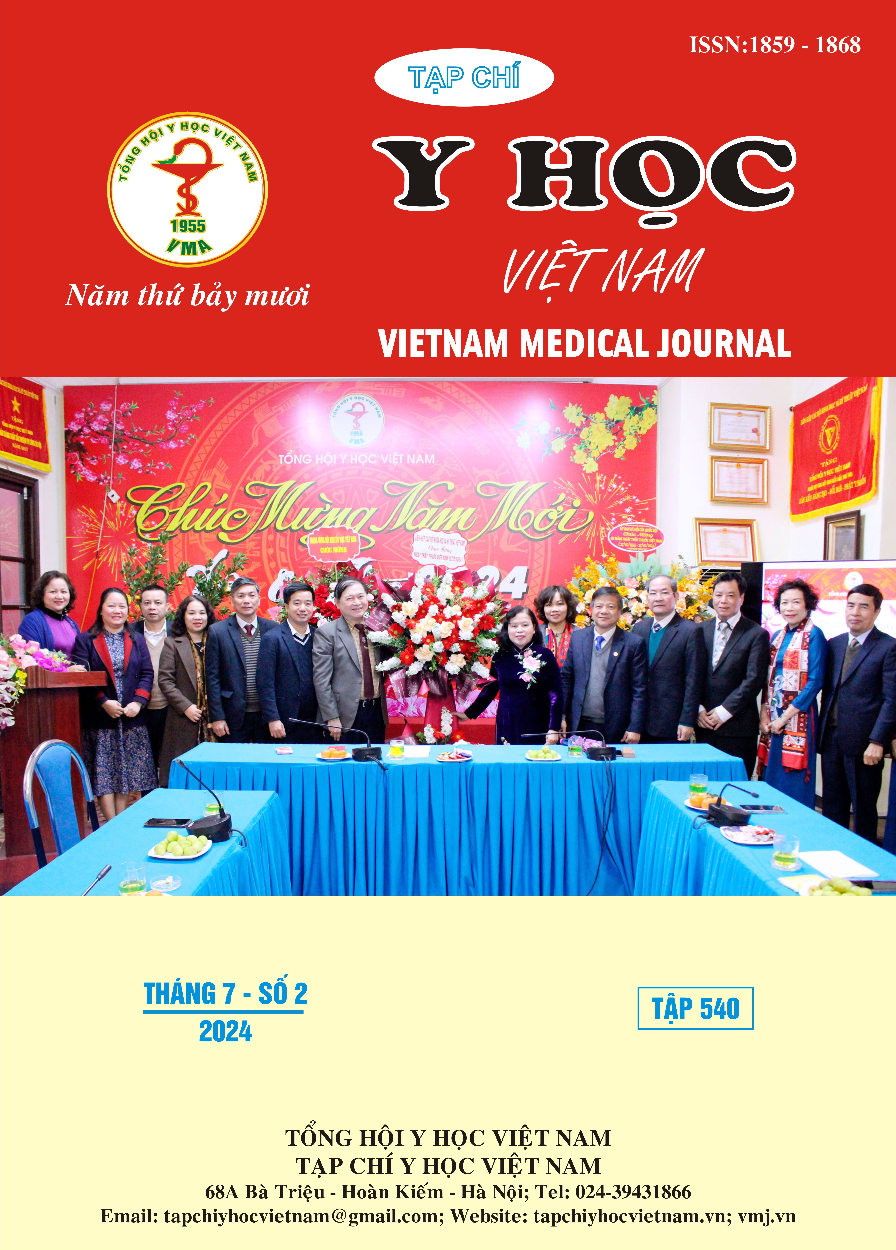DISTRIBUTION AND ANTIBIOTIC RESISTANCE CHARACTERISTICS OF ELIZABETHKINGIA MENINGOSEPTICA ISOLATED AT MILITARY HOSPITAL 103 FROM 2014 TO 2022
Main Article Content
Abstract
Objectives: determine distribution and antibiotic resistance characteristics of Elizabethkingia meningoseptica isolated at Military Hospital 103 from 2014 to 2022. Subjects and methods: This was a cross-sectional study. The subjects of the study were E. meningoseptica strains isolated at Military Hospital 103 from 2014 to 2022. Results: There were 38 E. meningoseptica strains isolated during the study period. Of which, 60.53% of all strains isolated were in the age group 60 years and older, the highest among other age groups. The rate of E. meningoseptica strains isolated in males (78.95%) was approximately four times higher than that in females (21.05%). E. meningoseptica was most commonly isolated in respiratory specimens (55.26%) and at the ICU (73.68%), no strains were isolated from surgical departments. E. meningoseptica strains were highly resistant (96.3%-100,0%) to most broad-spectrum antibiotics such as ceftazidime, cefepime, imipenem, and meropenem. E. meningoseptica was most susceptible to trimethoprim/ sulfamethoxazole (53.33%), and fluoroquinolones (ciprofloxacin: 32.26%, levofloxacin: 37.93%). Conclusion: E. meningoseptica was highly resistant to most tested antibiotics. This study suggested the need for implementing infection control measures to reduce the antibiotic resistance rate of E. meningoseptica to improving the effectiveness of treatment for patients.
Article Details
Keywords
Elizabethkingia meningoseptica; antibiotic resistance, Military Hospital 103
References
2. Clinical Microbiology procedured handbook. American Society for Microbiology. Clinical Microbiology procedured handbook ASM Press 2016.
3. Clinical and Laboratory Standards Institute. Performance Standards for Antimicrobial Susceptibility Testing (M100). 2023.90-92.
4. González LJ, Vila AJ. Carbapenem resistance in Elizabethkingia meningoseptica is mediated by metallo-β-lactamase BlaB. Antimicrob Agents Chemother. 2012;56(4):1686-1692.
5. Hsu MS, Liao CH, Huang YT, et al. Clinical features, antimicrobial susceptibilities, and outcomes of Elizabethkingia meningoseptica (Chryseobacterium meningosepticum) bacteremia at a medical center in Taiwan, 1999-2006. Eur J Clin Microbiol Infect Dis. 2011;30(10):1271-1278.
6. Jean S-S, Hsieh T-C, Ning Y-Z, Hsueh P-R. Role of vancomycin in the treatment of bacteraemia and meningitis caused by Elizabethkingia meningoseptica. International Journal of Antimicrobial Agents. 2017;50(4):507-511.
7. Ratnamani MS, Rao R. Elizabethkingia meningoseptica: Emerging nosocomial pathogen in bedside hemodialysis patients. Indian J Crit Care Med. 2013;17(5):304-307.
8. Teres D. ICU-acquired pneumonia due to Flavobacterium meningosepticum. Jama. 1974;228(6):732.


